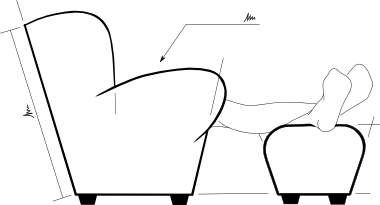Aerodynamic Efficiency
Atomic Duck will not be the most aerodynamically efficient velomobile available; though it will be much more efficient than a bicycle. Yes, it’s traditional to claim that what you’ll produce will automatically be better in every way than all the others on the market, but here, it’s a little bit more subtle:
Atomic Duck wont be the most aerodynamic velomobile, but I think it makes a _better compromise between efficiency and cost than the others._
Let me explain:
A teardrop is the most aerodynamically efficient shape if you don’t specify the geometry of the enclosed volume. This is why rain makes a droplet shape as it falls, it’s a volume of liquid that can be squeezed into any shape, so as it falls through the air, it gets moulded into a “perfect” (minimum-drag) shape for moving through the air.
In a velomobile (or any other form of transport) you can’t use any shape, you have to enclose a person and wheels and pedals. You must provide space to move your legs as you pedal, and your arms as you steer and for any components that need space to move. So there is no “perfect” solution, a teardrop either doesn’t fit everything in, or ends up bigger than necessary for the volume and increases the drag. But there are more and less efficient solutions, and the more efficient ones will tend to be more similar to a teardrop shape.
Manufacturing cost plays a big role in how efficient your design can be. A teardrop surface is a compound curve, it curves both along its length, and around its width. If you want to make compound curves in metal, you can:
-
Stamp them, like car panels. Very fast to produce each one, but the machinery is very expensive. Not suitable for small scale production
-
Work them with by hand. Using a mallet and [sand]bag, formers, english wheel and other metal working tools. This works well for one-offs and limited runs, but is very time consuming and highly skilled work. Depending on the radius of each curavture, a piece might be made from many smaller pieces that are then welded or riveted together.
Using plastics or composite materials, compound curves are easier to produce by forming the shape from a mold, so almost all velomobile producers use fibreglass or carbon fibre to make their outer shells. Composites are more costly than metal, per part, but the molds cost a lot less than metal stamps. The downside to composite construction is that it takes several hours per part because they need to be heated under pressure to cure, so volume manufacturing doesn’t scale well, and the equipment required means it’s too involved for most home builders.
There is an alternative though. By using a more simple shape, one that doesn’t require compound curves, produces almost as efficient a design that is far easier to construct. It’s an example of the 80/20 rule: it’s possible to get most of the way to the perfect result with a small cost and effort, but increasing the price has a diminishing return on improvement.
For Atomic Duck, we’ve taken inspiration from vintage cars and aircraft, to come up with a concept that has good aerodynamics with the minimum of compound curves. By having a more simple shape, it will be possible to build Atomic Duck with the minimum of tools and equipment, and from mostly sheet metal stock.
The simplicity of construction means reduced cost for the builder or purchaser; and opens up construction to small workshops and home-builders. And it still looks good too!

25hz wrote, “Talking about a teardrop is fine, and it is an efficient shape, but you can't compare it to a raindrop at all. Raindrops are completely different shapes. Contrary to popular opinion, a falling water drop does not take the shape of a teardrop. The longer it falls, and the faster it falls, it ends up with a flat bottom, and a curved top. Not even close to "teardrop" shape. If a raindrop DID form the shape of a teardrop, it would be more aero, fall faster, and hit with more force. Maybe not a good thing :)”